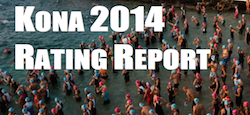This is the first race on this course, so there are no course ratings and expected finishing times.
KPR points and Prize Money
IM Malaysia has 2000 KPR points for the winner. It has a total prize purse of 40k$.
Male Race Participants
| Rank |
Bib |
Name |
Nation |
Expected Time |
Rating |
Swim Rating |
Bike Rating |
Run Rating |
Rank |
| 1 |
1 |
Cameron Brown |
NZL |
n/a |
08:29:47 |
00:50:00 |
04:41:22 |
02:52:25 |
12 |
| 2 |
2 |
Fredrik Croneborg |
SWE |
n/a |
08:54:59 |
00:51:38 |
04:51:58 |
02:55:52 |
77 |
| 3 |
4 |
Matt Burton |
AUS |
n/a |
08:55:17 |
00:53:22 |
04:40:00 |
03:04:42 |
(79) |
| 4 |
3 |
Luke Bell |
AUS |
n/a |
09:04:43 |
00:49:16 |
04:49:48 |
03:19:33 |
120 |
| 5 |
5 |
Benjamin Sanson |
FRA |
n/a |
09:09:15 |
00:46:24 |
05:34:51 |
03:32:38 |
141 |
| 6 |
6 |
Carl Read |
NZL |
n/a |
09:10:37 |
00:53:02 |
05:00:35 |
03:03:22 |
148 |
| 7 |
14 |
Karol Dzalaj |
SVK |
n/a |
09:15:49 |
00:53:09 |
04:49:34 |
03:17:24 |
164 |
| 8 |
10 |
Simon Cochrane |
NZL |
n/a |
09:17:20 |
00:52:51 |
05:02:18 |
03:06:52 |
175 |
| 9 |
7 |
Brian Fuller |
AUS |
n/a |
09:17:21 |
00:51:51 |
04:50:47 |
03:14:59 |
176 |
| 10 |
21 |
Tohara Kaito |
JAP |
n/a |
09:27:54 |
00:54:36 |
04:55:55 |
03:05:39 |
(211) |
| 11 |
15 |
Eneko Elosegui |
ESP |
n/a |
09:36:12 |
00:58:52 |
04:55:50 |
03:24:58 |
240 |
| 12 |
16 |
Michal Kulich |
SVK |
n/a |
09:38:46 |
01:01:42 |
05:10:17 |
03:05:13 |
255 |
| 13 |
8 |
Patrik Nilsson |
SWE |
n/a |
09:38:56 |
00:49:44 |
04:42:11 |
03:41:08 |
(256) |
| 14 |
17 |
Daiki Masuda |
JPN |
n/a |
09:40:43 |
00:56:03 |
05:11:15 |
03:34:13 |
260 |
| 15 |
19 |
Yu Shinozaki |
JPN |
n/a |
09:44:53 |
00:55:46 |
04:56:20 |
03:35:42 |
276 |
| 16 |
9 |
Adam Gordon |
NZL |
n/a |
09:56:34 |
00:54:51 |
05:11:24 |
03:29:35 |
(321) |
| 17 |
27 |
Jon Woods |
NZL |
n/a |
10:00:16 |
00:56:21 |
05:08:02 |
03:34:57 |
336 |
| 18 |
11 |
Timothy Beardall |
AUS |
n/a |
10:00:39 |
01:01:42 |
04:46:44 |
03:55:23 |
339 |
| 19 |
12 |
Dan Brown |
PHI |
n/a |
10:11:53 |
01:03:20 |
05:39:36 |
03:50:56 |
366 |
| 20 |
20 |
Josef Svoboda |
CZE |
n/a |
12:20:41 |
01:12:22 |
06:08:10 |
04:30:31 |
448 |
|
13 |
Zsombor Deak |
ROM |
n/a |
unrated |
unrated |
unrated |
unrated |
(n/a) |
|
18 |
Markus Mlinar |
AUT |
n/a |
unrated |
unrated |
unrated |
unrated |
(n/a) |
Female Race Participants
| Rank |
Bib |
Name |
Nation |
Expected Time |
Rating |
Swim Rating |
Bike Rating |
Run Rating |
Rank |
| 1 |
31 |
Diana Riesler |
GER |
n/a |
09:43:49 |
00:58:41 |
05:05:35 |
03:24:07 |
37 |
| 2 |
35 |
Rebecca Preston |
AUS |
n/a |
09:44:34 |
00:56:05 |
05:24:48 |
03:18:18 |
(39) |
| 3 |
36 |
Beth Gerdes |
USA |
n/a |
10:02:16 |
01:02:57 |
05:34:08 |
03:08:49 |
(78) |
| 4 |
37 |
Michelle Duffield |
AUS |
n/a |
10:11:59 |
00:59:53 |
05:29:39 |
03:23:44 |
(95) |
| 5 |
34 |
Keiko Tanaka |
JPN |
n/a |
10:13:58 |
00:55:21 |
05:25:45 |
03:27:47 |
97 |
| 6 |
32 |
Shiao-yu Li |
TWN |
n/a |
10:14:44 |
01:06:40 |
05:26:08 |
03:18:42 |
99 |
| 7 |
40 |
Maki Nishiuchi |
JPN |
n/a |
10:25:43 |
00:52:41 |
05:36:58 |
03:50:13 |
(122) |
| 8 |
33 |
Dimity-Lee Duke |
AUS |
n/a |
10:28:15 |
01:03:00 |
05:30:52 |
03:34:05 |
(126) |
| 9 |
39 |
Kristy Hallett |
AUS |
n/a |
10:39:04 |
01:02:42 |
05:28:21 |
03:44:47 |
(136) |
| 10 |
38 |
Zsuzsanna Harsanyi |
HUN |
n/a |
11:04:26 |
01:03:54 |
06:00:45 |
03:48:07 |
(154) |
Winning Odds
Male Race Participants
Cam Brown is the big name on the start list, but it’s hard to predict how he will do after a long season (including a recent win at MetaMan and declining his Kona slot). Luke Bell is coming back from an injury (and DNFs in Western Australia, Australia and Mont Tremblant), so Fredrik Croneburg has a much better winning chance than his rating would imply.
- Cameron Brown: 64% (1-1)
- Luke Bell: 17% (5-1)
- Fredrik Croneborg: 10% (9-1)
- Matt Burton: 6% (15-1)
Female Race Participants
Diana Riesler is clearly the strongest athlete on the bike – but it remains to be seen if she’ll be able to race well in the Malaysia climate:
- Diana Riesler: 64% (1-1)
- Shiao-yu Li: 16% (5-1)
- Beth Gerdes: 12% (8-1)
- Michelle Duffield: 4% (22-1)
- Dimity-Lee Duke: 2% (54-1)
- Keiko Tanaka: 2% (55-1)
